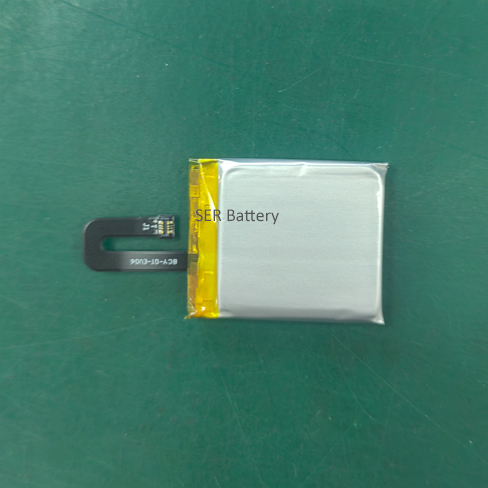Customized Ultra-Thin Batteries: The Future of Flexible, Arc-Curved Lithium Polymer Technology
Customized Ultra-Thin Batteries: The Future of Flexible, Arc-Curved Lithium Polymer Technology

In the ever-evolving landscape of portable electronics and wearable devices, the demand for more compact, lightweight, and adaptable power sources has never been greater. Traditional rigid batteries, while effective in many applications, struggle to meet the unique requirements of modern devices that often feature curved surfaces, flexible displays, or require extreme thinness. This is where customized ultra-thin batteries, particularly those utilizing advanced lithium polymer technology, are poised to revolutionize the industry.
The Rise of Lithium Polymer Technology
Lithium polymer (LiPo) batteries have emerged as a game-changer in the battery industry due to their high energy density, light weight, and flexibility. Unlike traditional lithium-ion batteries, which often rely on rigid metal casings and liquid electrolytes, LiPo batteries employ a solid polymer electrolyte and a flexible aluminum-laminated pouch enclosure. This design allows for significant reductions in size and weight, as well as the ability to conform to various shapes and curves.
The Advantages of Ultra-Thin Batteries
Flexibility and Form Factor: Ultra-thin LiPo batteries can be custom-designed to fit seamlessly into devices with curved or irregular shapes, enabling manufacturers to create sleeker, more ergonomic products. This is particularly important for wearable devices like smartwatches, fitness trackers, and even implantable medical devices.
Lightweight: The reduced size and weight of these batteries contribute to the overall portability and comfort of the devices they power. In the case of drones and other unmanned aerial vehicles, lighter batteries translate into longer flight times and improved performance.
Safety: Modern LiPo batteries incorporate advanced safety features such as overcharge protection, over-discharge prevention, and temperature monitoring. These features, combined with the inherent stability of the polymer electrolyte, make them safer than ever before.
Environmental Friendliness: As the world becomes more environmentally conscious, the recyclability and reduced environmental impact of LiPo batteries are becoming increasingly important. Many manufacturers are now focusing on developing eco-friendly materials and recycling processes for their batteries.
Customized Solutions for Diverse Applications
The true potential of ultra-thin LiPo batteries lies in their ability to be customized for specific applications. From the curvature and dimensions of the battery to its capacity and discharge rate, manufacturers can tailor the batteries to meet the unique needs of their customers.
For example, in the automotive industry, ultra-thin batteries could be integrated into the body panels or dashboards of electric vehicles, reducing weight and improving aerodynamics. In the medical field, flexible batteries could power implantable devices such as pacemakers and insulin pumps, providing patients with greater comfort and mobility.
Challenges and Future Directions
Despite their many advantages, ultra-thin LiPo batteries face several challenges, including the need for improved cycle life, cost reduction, and the development of more durable materials that can withstand the rigors of daily use. Researchers and manufacturers are actively working to overcome these obstacles through advancements in materials science, battery chemistry, and manufacturing processes.
As technology continues to advance, we can expect to see even more innovative applications of ultra-thin LiPo batteries. From foldable smartphones and rollable displays to smart textiles and wearable sensors, the possibilities are endless. The future of flexible, arc-curved lithium polymer technology is bright, and it promises to revolutionize the way we power our devices and interact with the world around us.





